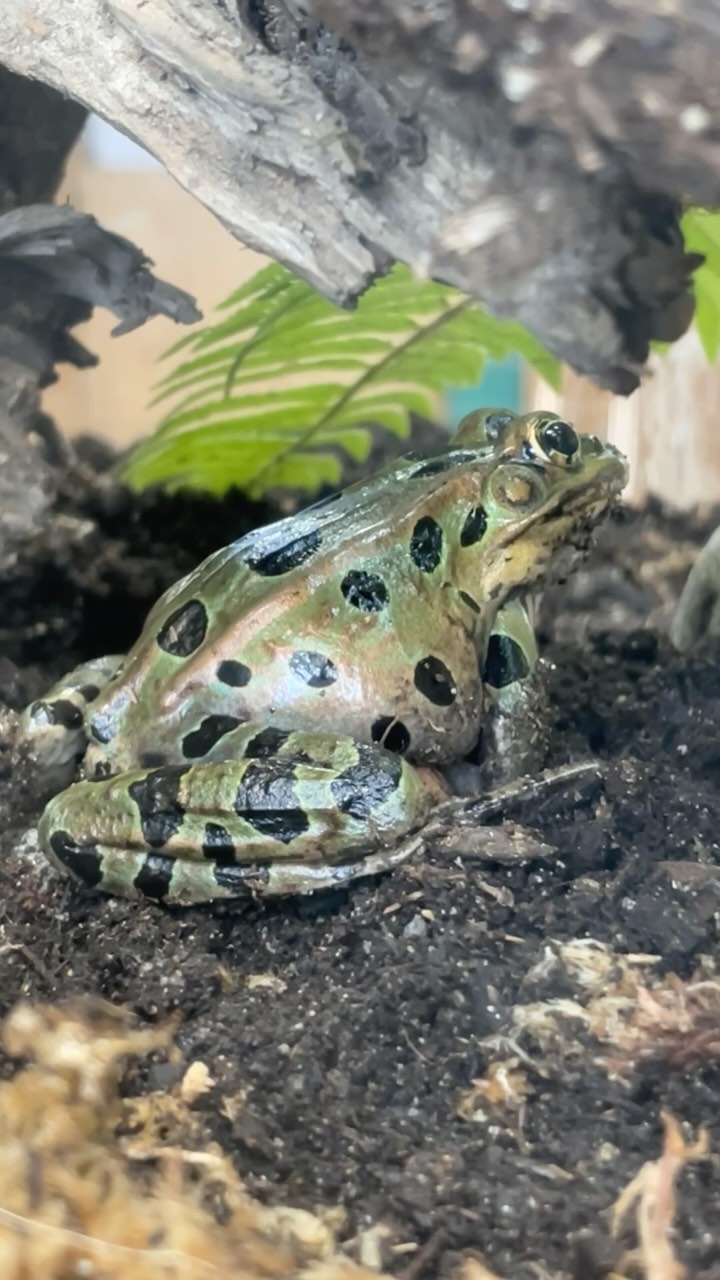– The decline of the Northern leopard frog and its endangered status in Washington
– Conservation efforts: Breeding and releasing Northern leopard frogs to re-establish populations
– The role of zoos and zookeepers in wildlife conservation and species recovery
– The adaptations and ecological importance of Northern leopard frogs in their natural habitats
– Challenges in wildlife conservation and the importance of public awareness and engagement
The Northern leopard frog (Rana pipiens), once a widespread and familiar sight across many parts of North America, has experienced a significant decline over the past few decades. This amphibian species, boasting a distinct pattern of dark spots on its light green to brown skin, has now been relegated to a precarious status in several areas where it once thrived, particularly in Washington, Oregon, and western Canada. In Washington, where only one known wild population remains, the Northern leopard frog has been designated as an endangered species since 1999. The dramatic reduction in their numbers calls attention to broader environmental issues and underscores the urgent need for conservation action.
Conservation efforts are key to halting the decline of this species and aiding its recovery. Behind the scenes, biologists and zookeepers diligently work to breed Northern leopard frogs, carefully nurturing them from the vulnerable stages of eggs and tadpoles to resilient froglets. Raising these amphibians in a protected environment increases their survival odds by allowing them to bypass many of the perils they would face in the wild, such as predation and disease. The ultimate goal is to release these nurtured frogs into their natural habitats, where they can contribute to re-establishing stable populations. A notable example of these efforts occurs each summer at the Columbia National Wildlife Refuge in Eastern Washington, where hundreds of mature frogs are introduced to the wild after being cared for and prepared by dedicated conservationists.
Keepers, like Madi, play an instrumental role in these conservation strategies. They are tasked with creating conditions that mimic the natural environment to the greatest extent possible. This includes providing the frogs with live prey, such as crickets, which prompts the amphibians to engage in their characteristic ambush-style hunting. This ensures that the frogs maintain their innate hunting instincts and helps them build the necessary skills to thrive upon their release into the wild.
The Northern leopard frog’s adaptations are a testament to its remarkable evolution. These frogs possess powerful hind legs that allow them to leap great distances, both to catch prey and evade predators. They rely on semi-permeable skin to breathe and take in moisture from their surroundings. Furthermore, their distinctive coloration and spotting offer camouflage against the varied backdrops of their wetland homes.
Their role within their ecosystem is significant. As both predators and prey, Northern leopard frogs contribute to the delicate balance of their environment. They help control insect populations and serve as an essential food source for birds, mammals, and other species. The decline of the Northern leopard frog can have cascading effects on ecosystem health, highlighting the broader implications of species loss.
However, the challenges in wildlife conservation are numerous. Habitats continue to be lost or degraded due to human activities, and changing climates cause additional stress on already vulnerable populations. Protecting and restoring wetland habitats are crucial to the survival of the Northern leopard frog and countless other species that rely on these ecosystems. Public awareness and engagement are also critical components in the fight for conservation. Citizen science programs, educational campaigns, and community involvement in habitat restoration bolster conservation efforts.
Overall, advocating for preserving the Northern leopard frog goes beyond saving a single species—it symbolizes a commitment to maintaining biodiversity and ecological integrity. Through the dedicated work of conservationists like zookeepers and increased public participation in environmental stewardship, there is hope for the recovery of the Northern leopard frog and the protection of the rich tapestry of life that depends on healthy, vibrant ecosystems.
*****
Source Description
Hoppy 🐸 Sprout, the Northern leopard frog, is an incredible ambassador for his wild counterparts. Once abundant throughout North America, northern leopard frogs rapidly disappeared from their native ranges in Washington, Oregon, and western Canada. The species has been listed as endangered in Washington since 1999, and with only one known wild population remaining in the state, there is still a long path to recovery for the frogs.
For years, we have raised Northern leopard frogs behind the scenes, from egg masses to tadpoles to froglets, growing them large enough to have a fighting chance in the wild. Then, hundreds of frogs are released each summer at the Columbia National Wildlife Refuge in Eastern Washington. Keepers prepare the frogs for life in the wild by giving them food like crickets to encourage their natural ambush-style hunting behavior.
📹: Keeper Madi


